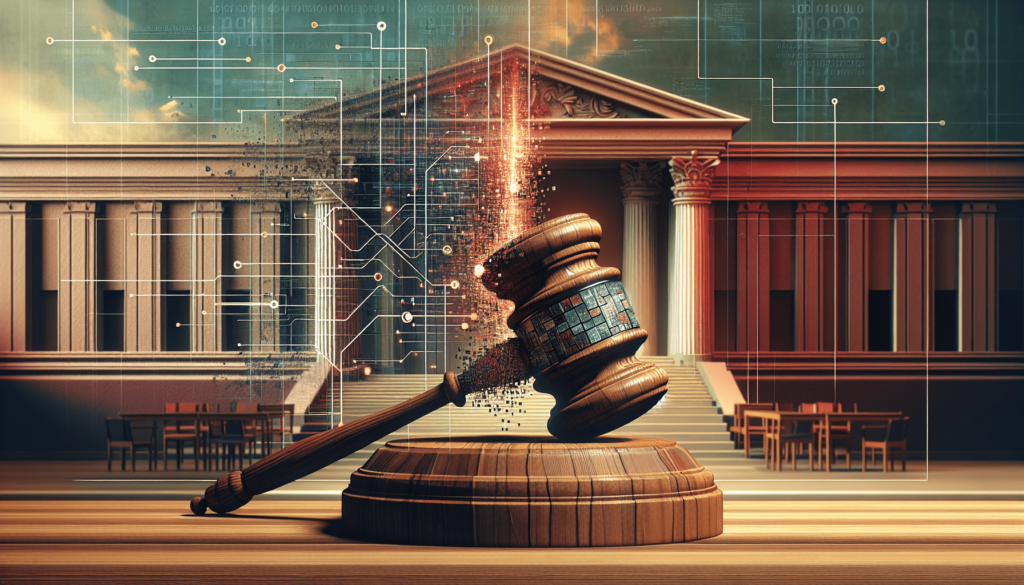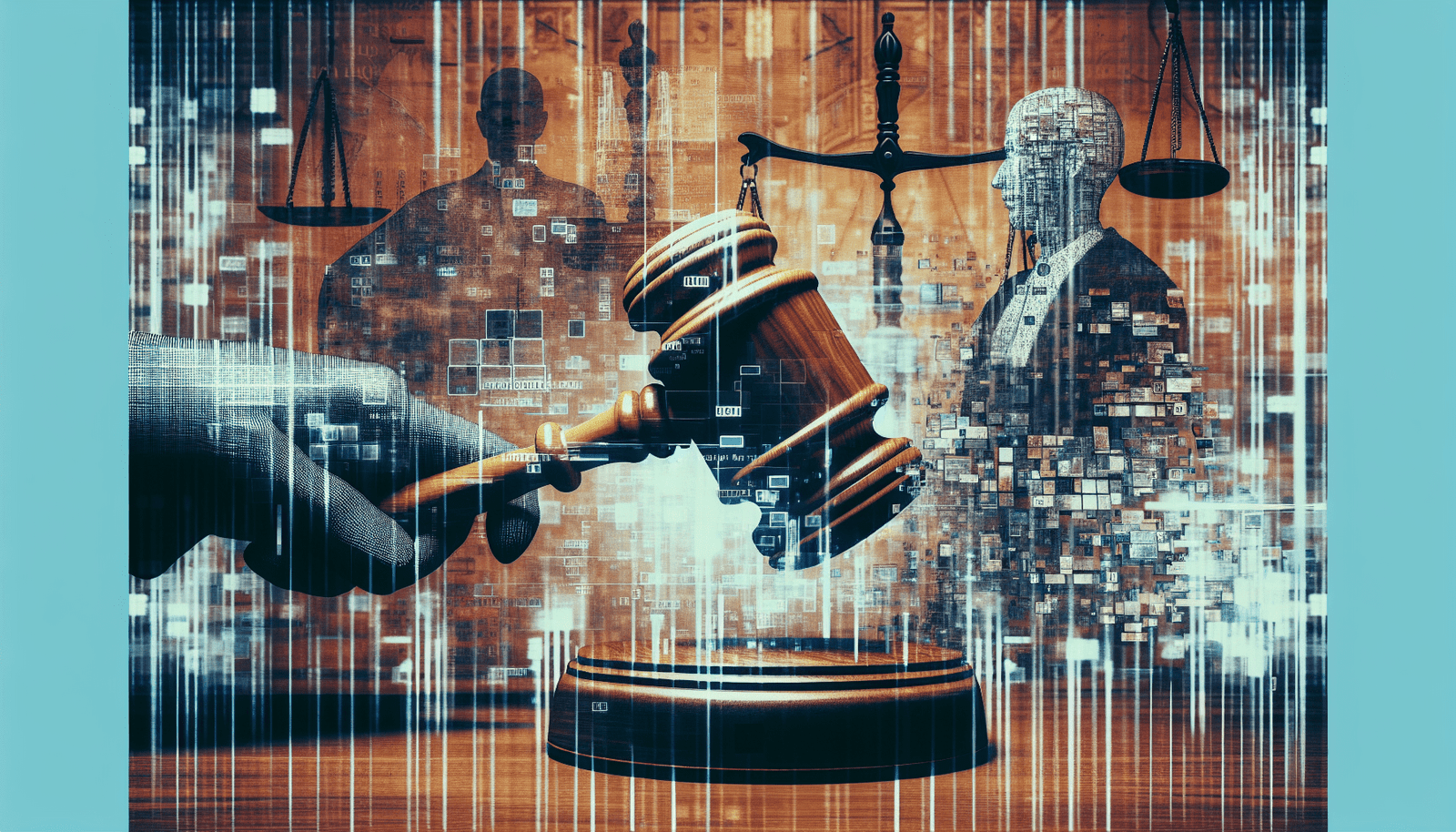The implications of deepfake technology in law are profound and multifaceted, ranging from issues of privacy invasion to potential perjury in courtrooms. As someone who has always been fascinated by the intersection of technology and law, I’ve delved into how deepfakes—a clever blend of ‘deep learning’ and ‘fake’—pose new challenges for legal professionals. Imagine trying to determine if a piece of video evidence is genuine or a sophisticated forgery; the stakes are incredibly high. This article aims to shed light on the legal ramifications of deepfakes, their potential misuse in various sectors, and how existing laws might evolve to address these emerging threats. Have you ever found yourself looking at a video and wondering, “Is this real or fake?” We’re living in times where technology is so advanced that it’s hard to tell the difference between what’s real and what’s been manufactured. Yes, I’m talking about deepfake technology! Let’s dive into what this means for the law and how it may impact us all.
Implications of Deepfake Technology in Law

What is Deepfake Technology?
Deepfake technology involves AI and machine learning techniques to create hyper-realistic videos where people appear to say or do things they never actually said or did. Imagine someone taking a video of my worst dance moves and superimposing my face onto it, making it look like I’m a professional dancer! Depending on your perspective, that could either be a hilarious party trick or a serious case of digital identity theft.
The Good, The Bad, and The Ugly
The Good
Like any technology, deepfakes have their upside:
- Entertainment: Consider movies where historical figures come to life or actors who have passed away can appear in new films.
- Education: Think of creating engaging and interactive educational materials where historical figures themselves narrate events.
The possibilities for creativity are endless, and these are just the appetizers.
The Bad
Unfortunately, deeper into the buffet, we find some less appetizing dishes:
- Misinformation: Political deepfakes can manipulate public opinion or spread false information.
- Invasion of Privacy: Imagine a deepfake implicating someone in a scandalous act they never did. Yikes!
The Ugly
The pitfalls are not just limited to misinformation. Imagine the legal complications:
- Defamation: False deepfakes can tarnish reputations.
- Fraud: Financial scams or identity theft using deepfakes.
Legal Implications
Defamation and its Consequences
Defamation via deepfake can be more damaging than traditional defamation. Why? Because seeing is believing. A deepfake video accusing someone of a crime can cause irreversible damage to their personal and professional lives.
Fraud and Identity Theft
Deepfakes can also be used in fraud and identity theft. Imagine someone faking a CEO’s voice to command unauthorized transactions. It’s like a high-tech version of the classic conman but on steroids!
Current Legal Framework
Existing Laws
Currently, most legal systems are struggling to keep up. In the U.S., for example:
- Defamation Laws: Existing defamation laws can apply, but proving that a deepfake caused harm can be tricky.
- Fraud Laws: Fraudulent use of deepfakes could fall under various statutes covering identity theft and financial fraud.
New Legislation
New laws are being proposed:
- California: Recently passed laws making it illegal to create deepfakes intended to harm or deceive within 60 days of an election.
- New York: Considering legislation specifically targeting deepfake pornography.

Challenges in Law
Evidentiary Issues
If someone accuses me of singing an off-key rendition of “Bohemian Rhapsody” in a deepfake, proving it wasn’t me becomes a task for forensic experts. This is where the waters get murky because proving authenticity can be incredibly complicated.
Jurisdictional Mess
Deepfakes can be made in one country and distributed globally. This means different jurisdictions will have to cooperate, which, as you can imagine, is easier said than done!
How Can We Combat Deepfakes?
Technology vs. Technology
One way to fight fire is with fire—we can use advanced detection technologies to spot and flag deepfakes. AI can be both the problem and the solution here.
Legal Reforms
We need robust laws tailored to this new technology. This means specific provisions in our legal system to address issues unique to deepfakes.
Public Awareness
Raising awareness is half the battle. If people know how to spot a deepfake, they’re less likely to fall for it. Schools, workplaces, and online platforms can play a crucial role in educating the public.
Case Studies
The Celebrity Deepfake
Take the case of actor Scarlett Johansson. She found herself the victim of deepfake pornography. While she had the means to address it legally, not everyone has that luxury.
Political Deepfakes
Another example is the political deepfakes that have surfaced in various elections around the world. These videos have the potential to disrupt democratic processes and influence voters wrongly.
Ethical Considerations
There are also ethical questions we need to ask:
- Consent: Is it ethical to create a deepfake of someone without their consent, even if it’s meant for harmless fun?
- Moral Responsibility: Should platforms like YouTube and Facebook take more responsibility to flag or remove deepfake content?
The Future of Deepfake Legislation
Global Cooperation
Global issues require global solutions. Countries need to work together to develop a unified legal framework to tackle the challenges presented by deepfakes.
Continuous Adaptation
As technology evolves, so too must our laws. Continuous adaptations and updates are necessary to address new ways bad actors use technology.
Personal Anecdote
On a lighter note, a friend once joked that he’d use deepfake technology to make it look like I was winning a karaoke contest! As someone who couldn’t carry a tune in a bucket, I found this both amusing and slightly terrifying. Just a fun thought, but the potential for harm is what keeps lawyers and lawmakers up at night.
Conclusion
Deepfake technology is a double-edged sword—while it opens up exciting possibilities, it also presents significant legal and ethical challenges. By staying informed, advocating for better laws, and using technology responsibly, we can navigate this complex landscape. So next time you see a video that seems too good (or bad) to be true, think twice—it just might be a deepfake.
Remember, knowledge is power. Whether it’s spotting a deepfake or knowing your rights if you ever fall victim to one, staying informed is your best defense. Keep questioning, keep learning, and stay safe out there!



